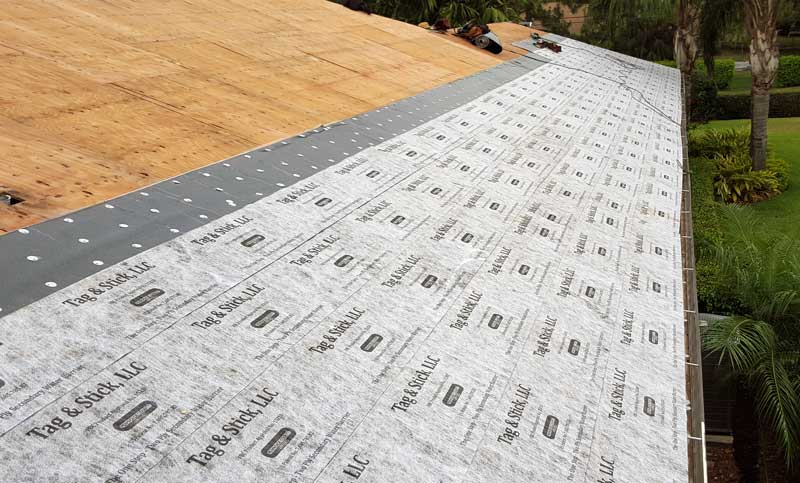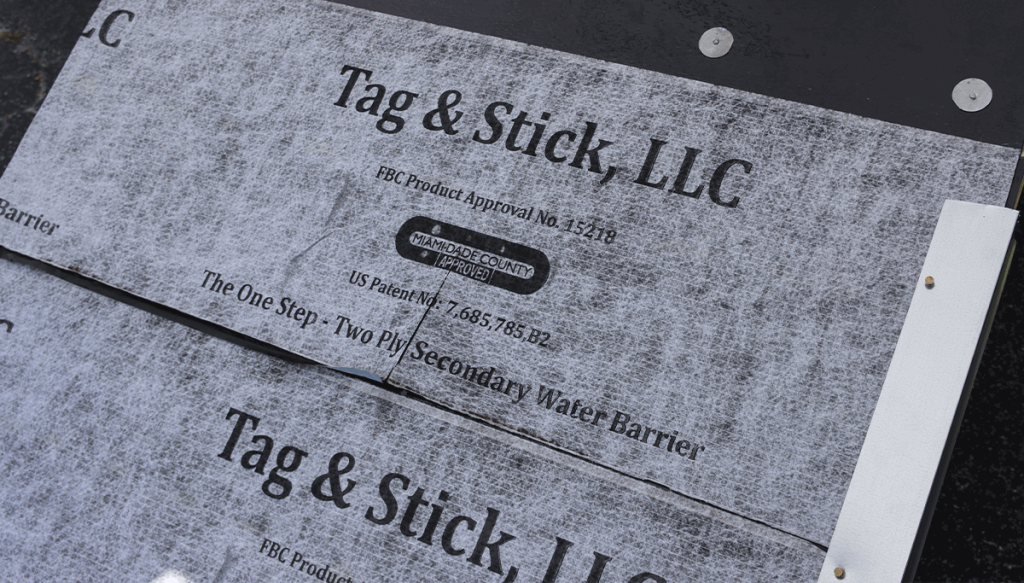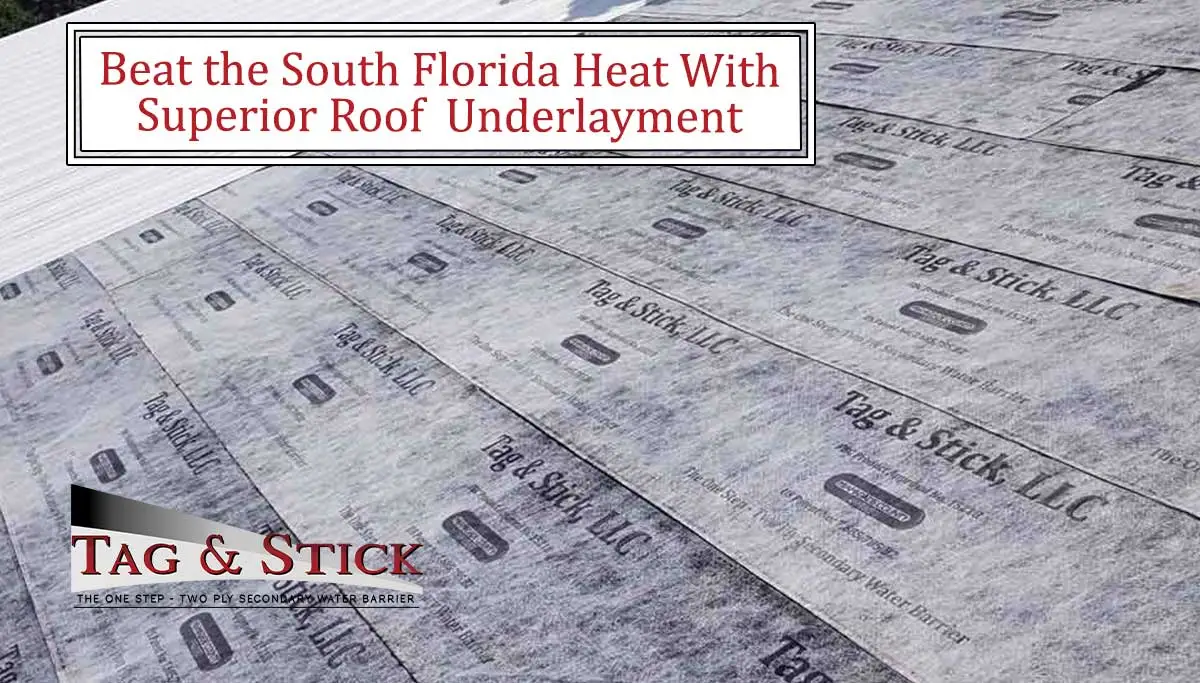Beat The South Florida Heat With Superior Roof Underlayment
In South Florida, where extreme weather conditions are the norm, selecting the proper underlayment is paramount. The scorching sun, high humidity, and the looming threat of hurricanes require careful consideration when choosing roof underlayment.
Choosing between traditional and synthetic underlayment materials can present a daunting challenge for a homeowner. Join us as we evaluate between these two to help you choose the best roof underlayment in South Florida.
What is Best for Florida Roof Underlayment?
The choice of underlayment is a critical decision that significantly influences the long-term resilience of a roof, particularly in South Florida.
Traditional Materials
Asphalt-saturated felt emerges as a longstanding and prevalent choice when considering traditional underlayment materials for roofs in South Florida. Known for its affordability and widespread use, asphalt-saturated felt has been a go-to option for many years. Its popularity is rooted in its cost-effectiveness and the familiarity contractors and homeowners have with its application.
However, the advantages of asphalt-saturated felt come with inherent trade-offs. While it provides a budget-friendly option, it may not offer the same durability and resistance to the elements as modern synthetic alternatives. South Florida’s climate, characterized by intense heat, high humidity, and the occasional threat of hurricanes, demands a robust underlayment that can withstand these challenges over an extended period. This prompts a critical evaluation of whether traditional materials like asphalt-saturated felt remain the optimal choice in the face of the region’s specific weather conditions and the evolving landscape of roofing technology.
Synthetic Underlayment
In response to the evolving demands of South Florida’s roofing landscape, synthetic underlayment has emerged as a formidable alternative to traditional materials. Comprising materials such as polypropylene or polyester, synthetic materials have gained widespread popularity due to their advanced features and enhanced performance. Notable among these advantages is their superior strength, which equips roofs with increased resistance to the weather in South Florida, such as intense sunlight, high humidity, and potential hurricanes.
Moreover, the water resistance offered by synthetic underlayment contributes to a heightened level of protection against moisture infiltration, a critical concern in a region where heavy rainfall and tropical storms are part of the norm. The lightweight nature of synthetic underlayment is another factor driving their adoption. This characteristic not only simplifies the installation process but also minimizes the load on the roof structure.
However, while synthetic options bring many benefits, cost considerations influence decision-making. Homeowners and contractors must weigh the upfront investment against the long-term advantages to determine the most cost-effective solution for their roofing needs in the dynamic climate of South Florida.
Florida’s New Roofing Underlayment Requirements
Constant exposure to high temperatures and humidity can lead to material degradation, affecting the underlayment’s ability to provide a reliable barrier against water infiltration. Moreover, the potential for hurricanes demands a robust underlayment that can withstand severe weather conditions.
In response to the unique challenges posed by Florida’s climate, the state has implemented new building code requirements. Adhering to these codes is not just a legal obligation but a necessity for ensuring the structural integrity of roofs in the region.
Certification and Compliance Standards
Meeting the latest Florida building codes is non-negotiable. Roof underlayment must adhere to specific certification and compliance standards to guarantee its suitability for the region. Homeowners and contractors should diligently select underlayment materials that meet or exceed these requirements.
Benefits of Modified Underlayment
Modified roof underlayment like Tag & Stick offer several advantages that align with the requirements of Florida’s building codes. Their durability under extreme weather conditions, enhanced water resistance, and ability to resist UV degradation make them a reliable choice for roofs in South Florida
What to Consider When Choosing the Best Roof Underlayment for Florida
When selecting roof underlayment for South Florida, several factors should be taken into account to ensure optimal performance and longevity.
UV Resistance
The constant sunlight in South Florida can take a toll on roofing materials. Choosing underlayment with excellent UV resistance is paramount to prevent premature degradation and ensure long-term performance.
Installation Guidelines
Proper installation is critical to the effectiveness of roof underlayment. Guidelines for ventilation, fastening methods, and overlaps should be strictly followed to maximize the underlayment’s protective capabilities.
Cost Considerations and Long-Term Value
While the upfront cost of synthetic underlayment may be higher than traditional options, it’s crucial to consider the long-term benefits. Investing in high-quality underlayment pays off in terms of durability, reduced maintenance costs, and prolonged roof life.
Warranty Information
Warranty considerations should not be overlooked when choosing roof underlayment. A robust warranty assures the manufacturer’s confidence in their product. Homeowners should carefully review warranty terms to understand coverage and exclusions.
Florida Roofing Underlayment FAQs

To assist homeowners and contractors in making informed decisions, let’s address some common questions about roofing underlayment in South Florida.
Can traditional asphalt-saturated felt withstand the intense heat in Florida?
Traditional asphalt-saturated felt is commonly used in Florida; however, its effectiveness can be compromised over time due to the region’s high temperatures. Homeowners should consider more resilient options, such as synthetic underlayment, for enhanced durability in the face of Florida’s challenging climate.
What certifications should I look for in underlayment?
Look for underlayment with certifications that indicate compliance with Florida’s building codes, such as ASTM standards.
Transform Your Roofing Experience with Tag and Stick

Are you seeking roofing underlayment that goes beyond the ordinary, delivering enhanced safety, energy efficiency, and timely project completion for your Florida property? Tag & Stick is committed to excellence. We take pride in revolutionizing roofing possibilities by providing innovative, reliable underlayment solutions. Choose Tag & Stick for roofing materials that meet industry standards and exceed expectations, ensuring a secure and energy-efficient roof while staying within your budget. Speak to our friendly customer service directly at 954-255-3107.
